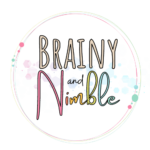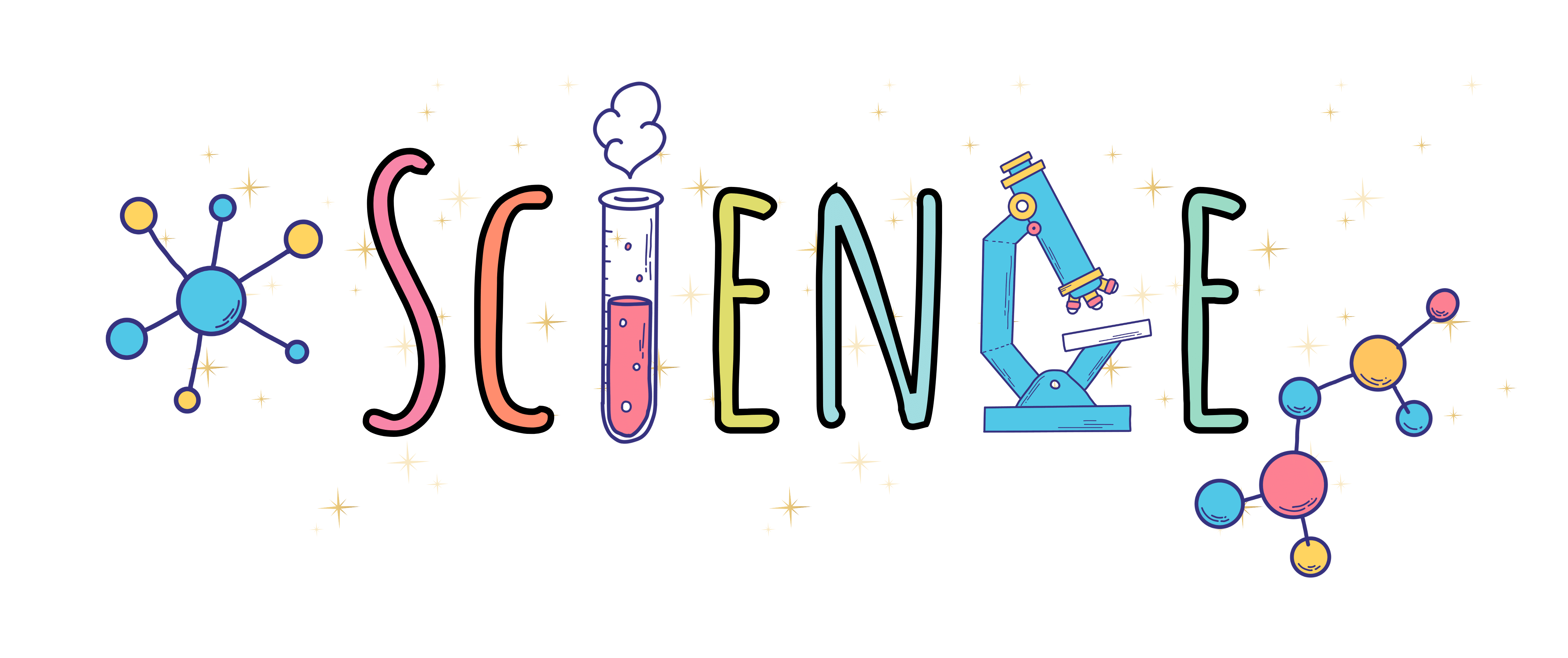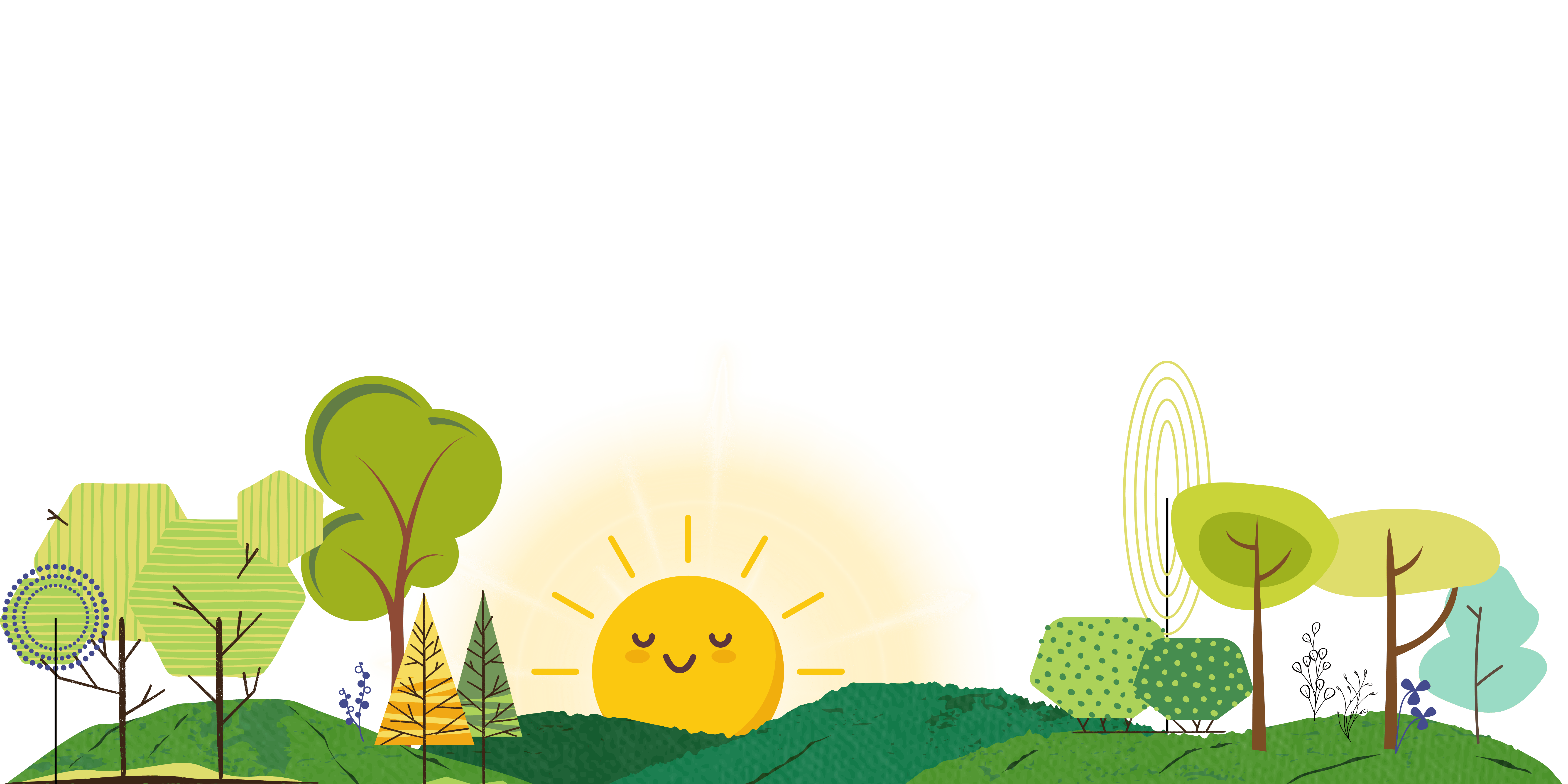Website Disclaimer
Grade levels are intended to offer a broad overview and some guidance for those that find this approach helpful. You’ll find certain subjects covered multiple times, along with a few recurring links. Feel free to delve into areas that both you and your child find most suitable and engaging.
As with all online content, it’s important to supervise the materials linked to this site to ensure they align with your family values and educational approach.
Click On The Subjects Below To Get Started
Materials
There are a multitude of materials to explore. Some things are made of wood, like your table or a tree. Some are made of metal, like a car or your mom’s cooking pot. Others are made of plastic, like your toy truck or a water bottle.
These materials can do different things! Some are hard, like the floor you walk on, and some are soft, like your comfy pillow. Some materials let light through, like the windows in your house, and others block the light, like your bedroom door.
Understanding materials helps us make things. Think about it – if you were going to build a house, you wouldn’t use paper, right? Because paper isn’t strong enough. You’d use strong materials like wood, bricks, or metal.
Scientists and engineers spend a lot of time figuring out which materials are best for different jobs. They study how materials behave, whether they’re stretchy or stiff, heavy or light, and they use this knowledge to build all the amazing things around us.
Suggested Videos:
Suggested Products:
States of Matter
Solid:
- If you put your drink in the freezer, it would turn into ice, right? Ice is an example of a solid. It’s hard, and you can touch it. So, when things are solid, they keep their shape.
Liquid:
- Now, let’s say you take that ice out of the freezer and leave it on the table. What happens? It melts into water! Water is an example of a liquid. Liquids can flow and take the shape of the container they’re in. So, when things are liquid, they don’t have a fixed shape like solids do.
Gas:
- Alright, let’s do one more thing. Imagine you’re heating up that water on the stove. What do you see? Steam! Steam is an example of a gas. Gases are a bit like invisible air. They spread out and fill up any space they can. So, when things turn into gas, they don’t have a fixed shape, and you can’t really see them.
Suggested Videos:
Suggested Products:
Recommended for readers ages 7-9 years old.
How Do Molecules Stay Together?: A Book About Chemistry
The How Do series encourages readers to guess and delve into the scientific explanations behind correct answers. This latest addition to the series delves into fundamental principles of chemistry, such as atoms, elements, compounds, reactions, and more, presenting the information in an informative and captivating manner.
Changes of State
Solid to Liquid:
- As you hold your popsicle, it starts melting, right? The solid popsicle turns into a liquid, and you might even see some droplets forming. That’s because the heat from the sun is making it change from a solid to a liquid. This change is called “melting.”
Liquid to Gas:
- Puddles of water disappear with the heat from the sun. That’s because the liquid is turning into an invisible gas. This change is called “evaporation.”
Gas to Liquid:
- Imagine you have a cold drink in your hand. What happens on the outside of the glass? You might see tiny water droplets forming. That’s because the warm air around is turning into tiny water droplets when it touches the cold glass. This change is called “condensation.”
Liquid to Solid:
- Now, let’s say you put that drink in the freezer. What happens? The liquid inside turns into ice. The liquid becomes a solid. This change is called “freezing.”
Suggested Videos:
- Changes Are Fun! Heating and Cooling
- Bill Nye The Science Guy on Heat
- Changes in Boiling Temperature-1962
- What Are Convection Currents?
- States of Matter and Changes of State
- Solids and Liquids for Kids
- States of Matter – Freezing & Melting
- States of Matter – Evaporating & Condensing
- Evaporation and Condensation
Heat
Imagine you have a hot cup of chocolate, and you leave it on the table. What happens? The heat from the chocolate starts moving into the air around it. Heat likes to move around and share its warmth with things that are cooler.
Suggested Videos:
Physical vs Chemical Changes
A physical change is when something changes how it looks or feels and yet remains the same. It’s like folding a shirt or rolling playdough into a shape.
A chemical change is when something becomes a whole new thing. Mixing ingredients and baking it into cookies is an example of a chemical change.
Suggested Videos:
Mixtures
A mixture is when you take different things and combine them, but they don’t change into something else. Each part of the mixture keeps its own identity. It’s like combining lettuce, cucumbers, and carrots into a bowl to create a salad.
Mixtures are all around us. Cereal with milk, a bowl of soup with veggies, or even the colors in your box of crayons – they’re all mixtures. The cool thing is, you can see and sometimes even taste the different parts that make up a mixture.
Suggested Videos:
Force & Motion
Think about when you play with a soccer ball. If you want the ball to move, what do you do? You give it a little push or a big kick, right? That’s using force! Force is what makes things move.
Now, when things move because of a push or pull, that’s called motion. So, if you push your toy car and it rolls across the floor, that’s motion. You can also stop motion by using force – like when you catch the rolling toy car with your hand.
Suggested Videos:
- Push and Pull for Kids
- Pushes and Pulls / Types of Motion Lesson for Kids
- Balanced and Unbalanced Forces
- Force, Mass, and Change in Motion | Video by SquidBooks
- Accelerating Mass: F=ma
- Inertia: Newton’s First Law
- FORCE AND MOTION
- Force, Mass, and Acceleration: Newton’s Second Law
- Action and Reaction: Newton’s Third Law
- Demonstrate Newton’s Third Law of Motion | Science Projects
- Science Max | ATTRACTION & FORCES | Full episodes
Magnets
Most magnets are made of a special material that has the ability to attract things. When you bring something close to a magnet, it can either stick to it or get repelled.
Magnets have two ends called the north pole and south pole. If you cut a magnet in half, each piece will still have a north and a south pole. Like poles (north-north or south-south) repel each other, while opposite poles (north-south) attract each other. This is why magnets can either pull certain objects toward them or push them away.
Earth itself acts like a giant magnet with a north pole and a south pole. Compass needles align with the Earth’s magnetic field, helping us navigate.
Suggested Videos:
Suggested Products:
Classifications
There are a lot of different animals on this planet. Scientists use something called “classification” to help organize them in order to understand them. They place them into groups based on things they have in common.
Knowing the group an animal belongs to helps scientists guess things about it. For instance, if an animal is in the mammal group, they might guess it has fur, gives birth to live babies, and might nurse them with milk.
Scientists use classification to check on how many different animals are in a place, see if any need help, and make plans to protect them.
Suggested Videos:
- Living & Non Living Things
- Living and Non-living Things for Kids
- What Are Living and Non-living Things?
- Living and Non-living Things for Kids
- Animal’s Skeletons for Kids
- Vertebrate Animals
- Animal classification
- Mammals
- What is a Mammal?
- All about Fish for Kids
- All About Birds
- Vertebrates
- Mammals for Kids
- What is a Mammal?
- All about Fish for Kids
- All About Birds for Children
- Reptiles for Kids
- Amphibians for Kids
- Vertebrate Animals for kids: Mammals, fish, birds, amphibians and reptiles
- Animal’s Skeletons for Kids
- Reptiles for Kids
- Reptiles
- What’s the difference between vertebrate & invertebrate animals?
- Exoskeletons
Life Cycles
A life cycle is like a big adventure story that every living thing goes through – from being born or hatching, growing up, having babies, and then starting the adventure all over again.
Example:
A butterfly starts as a tiny egg, then hatches into a caterpillar. The caterpillar eats a lot and grows until it forms a chrysalis. Inside the chrysalis, it transforms into a beautiful butterfly and the cycle continues.
Suggested Videos:
- The Life Cycle Song | Science Songs | Scratch Garden
- Animal Life Cycles
- The Life Cycle of a Butterfly – Science for Kids
- How Does a Caterpillar Become a Butterfly?
- The Butterfly Life Cycle | Educational Videos For Kids
- The Life Cycle of a Frog
- The Life Cycle of Dart Frogs
- This Is How a Tadpole Transforms Into A Frog | The Dodo
- Honeybee Life Cycle | All about Honeybees
- The Life Cycle Of A Honey Bee
- Incredible EGG to BEE Transformation Time-Lapse!
- Chicken Life Cycle | All about Chickens
- LIFECYCLE OF A BIRD
- Chicken Embryo Development
- I WAS BORN IN A GLASS!
Suggested Products:
Montessori Life Cycle Learning & Education Toys
Life cycle manipulatives offer a visual representation of complex biological processes. Seeing a tangible model of a life cycle, whether it’s for plants, animals, or insects, helps students conceptualize and internalize the stages more effectively than just looking at pictures or reading about them.
Recommended for ages 5 years old and up.
Learning Resources Butterfly Life Cycle, 9 Write and Wipe Pieces
Introduce your students to the captivating world of a butterfly’s life cycle with our realistically detailed jumbo magnets. These magnets are designed to help students visually explore and understand each stage of the butterfly’s life cycle. With these jumbo magnets, you can easily model the complete life cycle directly on the whiteboard, making the learning experience engaging and interactive. The set includes nine write-and-wipe pieces, allowing students to participate actively in the learning process. Each magnet is intricately detailed to provide a realistic representation of the butterfly’s journey from egg to caterpillar, pupa (chrysalis), and finally, to the adult butterfly.
Zoology
Zoology helps us understand the incredible diversity of animal life on Earth. By studying different species, scientists can learn about the various adaptations and characteristics that make each animal unique.
Zoologists play a crucial role in conservation efforts. By studying the behavior, habitats, and interactions of animals, they can contribute valuable information to conservation programs and help protect endangered species and their ecosystems.
This sections focuses mostly on the importance of pollinators.
Bees:
- Bees are like nature’s superheroes. They buzz around, collecting sweet nectar from flowers. While they’re sipping nectar, they accidentally pick up pollen on their furry bodies. When they visit another flower, some of that pollen rubs off, helping the flowers make seeds and grow.
Butterflies:
- Picture butterflies dancing from flower to flower with their delicate wings. Just like bees, butterflies love sipping nectar. As they flutter around, they also carry pollen and help flowers create seeds for new plants.
Beetles and Bugs:
- Some beetles and bugs are like garden visitors, too. They crawl around flowers, munching on pollen and nectar. As they move, they help spread pollen and assist in the flower’s life cycle.
Why Pollinators Matter:
- Pollinators help flowers create seeds, and those seeds grow into new plants. This is crucial since many of the fruits and vegetables we eat come from plants that need pollinators.
How You Can Help:
- Kids can be pollinator pals by planting flowers in the garden or in pots on the windowsill.They can also incorporate “bug hotels” and safe places for our pollinator friends to access water. This gives our buzzing buddies a place to hang out, sip nectar, and do their important pollination work.
So, next time you see a bee, butterfly, or a beetle, know that they’re not just cute visitors – they’re little heroes helping nature bloom and grow.
Suggested Videos:
- * BEE * | Animals For Kids | All Things Animal TV
- Flowers and Their Pollinators: A Perfect Match! | Spring is Here! | SciShow Kids
- Like Fruit? Thank a Bee!
- How Do Pollinators Help Plants Grow? | SciShow Kids Compilation
- How Pollination Works
- Pollinators For Kids | Educational Show For Kids
- Make a Bee Hotel for Pollinators Week
- All About Bats for Kids: Animal Videos for Children – FreeSchool
- Flying Foxes | World’s Weirdest
- Catching Bats by Hand! – The Mexican Free Tailed Bat
- How to Build a DIY Bat House!
Suggested Products:
Lulu Home Wooden Insect House, Hanging Insect Hotel
Insect hotels or bug habitats, play a crucial role in promoting biodiversity. They provide a safe and sheltered environment for a variety of insects. Insects, such as solitary bees, ladybugs, and beetles, seek out these structures for nesting and overwintering.
Recommended for readers ages 4-8 years old.
Make Way for Butterfly (A Very Impatient Caterpillar Book)
This amusing final chapter in Ross Burach’s Very Impatient Caterpillar series charmingly urges readers to embrace their uniqueness, while shedding light on the vital role pollinators play in our ecosystem.
Plants
Parts of a Plant:
Roots:
- Imagine the roots as the plant’s anchor. Just like your feet keep you in one place, roots help the plant stay in the ground. They also drink water and take in nutrients from the soil to help the plant grow big and strong.
Stem:
- Picture the stem as the plant’s backbone. It stands up tall and supports all the leaves and flowers. The stem is like the plant’s highway, helping water and nutrients travel from the roots to the rest of the plant.
Leaves:
- Leaves are like the plant’s solar panels. They soak up sunshine and turn it into food through a process called photosynthesis. Just like you need food to grow, plants need sunlight and leaves help make that happen.
Flowers:
- Flowers are the plant’s way of making seeds. They attract bees, butterflies, and other friends to help with pollination. When pollination happens, the plant can make seeds to grow new plants.
Suggested Videos:
- ScienceMan Lesson – Basic Plant Structures
- How Pollination Works
- Parts Of A Plant | The Dr. Binocs Show
- The Plant Kingdom: Characteristics and Classification
- Foodwise Kids: What Plant Parts Do We Eat?
- The Color-Changing Celery Experiment!
- What’s the Difference Between Fruits and Vegetables?
- Is it a Fruit or a Vegetable?
- Plant Life Cycle Stages From Seed To Fruit
- How Does A Seed Become A Plant? | Backyard Science | SciShow Kids
- Do Plants Need Water and Sunlight to Grow?
- Seeds and the Life Cycle of Plants
- How Plants Grow for Kids
- Look Inside a Flower! | Science Project for Kids
- Be a Field Scientist! – #sciencegoals
- Grow Your Own Plants! – #sciencegoals
Suggested Products:
Recommended for readers ages 3-8 years old.
RHS The Magic & Mystery Trees
Flip through breathtaking illustrations to uncover the ways in which trees contribute to preventing soil erosion, delineating the seasons, and creating habitats for wildlife. Delve into a wealth of factual, entertaining, and insights into their crucial role in nature. Engage in practical activities, including planting your own tree and identifying a tree’s age, for an enriching experience.
Recommended for readers ages 4-7 years old.
The Big Book of Blooms (The Big Book Series)
Discover the diverse realm of plants, ranging from tiny seeds to towering trees. Immerse yourself in the intriguing details of the most peculiar, aromatic, and perilous flowers found on Earth through this captivating encyclopedia.
Recommended for readers ages 5-9 years old.
Trees, Leaves, Flowers and Seeds: A Visual Encyclopedia of the Plant Kingdom
Discover the diverse realm of plants, ranging from tiny seeds to towering trees. Immerse yourself in the intriguing details of the most peculiar, aromatic, and perilous flowers found on Earth through this captivating encyclopedia.
Recommended for readers ages 4 years old and up.
Backpack Explorer: Discovering Trees: What Will You Find?
Packed with engaging activities, young explorers will be prompted to stop, look, listen, and touch as they interact with the natural world. The book includes interactive field guides for identifying common trees, hands-on craft projects like making a tree rubbing or a nature mask from colorful leaves, and delightful discovery features with interesting tree facts. Equipped with a real magnifying glass, stickers, and a log for recording tree finds, this book becomes the perfect companion for any nature adventure.
Traits
Traits are like special features or characteristics that make each person or living thing unique. They’re a bit like the special ingredients that make you, you.
Examples of Traits:
Hair Color:
- Imagine a box of crayons. Just like how crayons come in different colors, hair comes in various colors too. Some people have brown hair, some have black, and others might have blond or red hair.
Eye Color:
- Think about the color of your eyes. Are they brown, blue, green, or maybe even a mix? Your eye color is a trait, and it’s something special that you inherit from your family.
Freckles:
- If you have tiny spots on your face that come out in the sun, those are freckles! Freckles are like nature’s way of adding a sprinkle of fun to your skin.
Ear Shape:
- Look at your ears. Are they round, maybe a bit pointy, or something in between? The shape of your ears is another trait.
Widow’s Peak (Hairline):
- Look in the mirror and check your hairline. If it comes down in a V-shape at the center of your forehead, that’s called a widow’s peak.
So, traits are like the unique features that make everyone special. Whether it’s the color of your eyes, the style of your hair, or even how you like your food, these traits make you wonderfully one-of-a-kind.
Suggested Videos:
Rocks & Minerals
Sedimentary Rocks:
- Description: Imagine these rocks as nature’s storytellers. They’re made from layers of tiny particles like sand, mud, or even tiny pieces of shells that have been pressed together over time.
- Examples: Sandstone (made of sand), shale (made of mud), and limestone (made of shells and debris).
Igneous Rocks:
- Description: These rocks are like nature’s cool builders. They’re formed when melted rock (magma) from inside the Earth cools and hardens.
- Examples: Granite (coarse-grained and speckled), basalt (fine-grained and dark), and obsidian (smooth and glassy).
Metamorphic Rocks:
- Description: Think of these rocks as nature’s transformers. They used to be other types of rocks but changed because of heat and pressure deep within the Earth.
- Examples: Marble (from limestone), slate (from shale), and schist (from shale or granite).
How Rocks Form:
- Rocks can change from one type to another in a cycle. For example, a sedimentary rock like shale might be heated and squeezed to become a metamorphic rock like slate. Or, a granite igneous rock might weather over time to become tiny particles that eventually form a sedimentary rock.
Suggested Videos:
Suggested Products:
Recommended for readers ages 4-8 years old.
Backpack Explorer: Rock Hunt: What Will You Find?
Packed with features, including 12 interactive field guide pages introducing rock classifications based on color, shape, size, and texture, the book offers sensory scavenger hunts, hands-on outdoor creative activities, rock experiments, and discovery zone pages with fascinating facts about geology, landforms, igneous and metamorphic rocks, gems, fossils, and more. Equipped with a real magnifying glass, stickers, and a log for recording rock finds, this book becomes the ultimate explorer guide for budding geologists.
Recommended for readers ages 5-9 years old.
My Book of Rocks and Minerals: Things to Find, Collect, and Treasure
Designed for interactive learning, the book engages young minds with details about 64 different types of rocks and minerals. Readers will learn how to distinguish between them and discover where they can be found, from the depths of space to the darkest caves. The exploration extends to glow-in-the-dark minerals and unique living gems.
Recommended for readers ages 6-12 years old.
Geology Lab for Kids: 52 Projects to Explore Rocks, Gems, Geodes, Crystals, Fossils, and Other Wonders of the Earth's Surface
In this book, you will learn:
- How to identify the most common rocks and minerals
- How to maintain and display your rock collection
- How insects are trapped and preserved in amber
- How geysers and volcanoes form and erupt
- How layers of rock reveal a record of time
- How to pan for gold like a real prospector
Weather
Severe weather is like Mother Nature having a big, loud party in the sky. It can be a bit more intense and sometimes a little scary. But don’t worry, we can be prepared.
Thunderstorms:
- Thunderstorms are like nature’s drum concerts. You’ll see flashes of light (lightning) and hear big rumbles (thunder). Sometimes, thunderstorms bring heavy rain, strong winds, and even hail. It’s like a spectacular show in the sky.
Tornadoes:
- Tornadoes are like nature’s spinning tops. They’re super strong winds that twirl around and around. If a tornado comes, it’s important to find a safe place, like a basement or an inside room without windows, until the storm passes.
Hurricanes:
- Hurricanes are like giant, windy parties in the ocean. They bring lots of rain and strong winds. If you live near the coast, you might hear about hurricanes. Families get ready by boarding up windows and having emergency kits just in case.
Blizzards:
- Blizzards are like snowstorms on turbo mode. They bring lots and lots of snow and strong winds. During a blizzard, it’s cozy to stay inside with warm blankets and hot cocoa until the snow stops.
Floods:
- Floods are like big puddles that don’t go away. Sometimes, too much rain falls, and rivers or streets can get flooded. It’s important to stay away from floodwaters and be safe.
How to Stay Safe:
- Listen to Adults: If grown-ups tell you to go inside or find a safe spot, listen to them.
- Have a Plan: Talk with your family about what to do if there’s severe weather. Where’s the safest place in your house? Where can you meet if you need to leave your home?
- Emergency Kit: Have a little bag with some snacks, a flashlight, and important things in case you need to stay safe for a while.
Remember:
- Severe weather might seem a bit scary, but there are a lot of smart people, like meteorologists, who are keeping an eye on it to help keep everyone safe.
Suggested Videos:
- Where Does Water Come From? | Ecology for Kids
- Water Cycle Explained for Kids!
- The Weather for Kids
- The Water Cycle for Kids
- SCIENCE KS2 – States of Matter – Water Cycle
- How Do We Know When It Will Rain? | Weather Science | SciShow Kids
- All About Weather
- Be a Weather Watcher
- Powerful Weather
- Wonder About Weather | Nat Geo Kids Weather Playlist
- Severe Weather
- Severe Weather: Crash Course Kids #28.2
- Cloud Facts!
- Thunder and Lightning Explained!
- Hurricane Facts for Kids!
- How To Make A Hurricane In A Jar
- Tornado Facts for Kids!
- How To Make A Tornado In A Box
- The Spangler Effect – Fire Tornado Season 01
- How to Read a Thermometer
- Fun Science With Rob: Temperature
- Weather: Measuring Temperature
Suggested Products:
Recommended for readers ages 5-8 years old.
National Geographic Kids Everything Weather: Facts, Photos, and Fun that Will Blow You Away
Uncover everything you need to know about weather and its incredible dynamics within the vibrant, lively, and easily accessible pages of this book. Young readers will also discover real-life experiences with extreme weather, shared by National Geographic tornado chaser Tim Samaras in “Explorer’s Corners” throughout the book. Bursting with intriguing facts and stunning photographs, this book offers an in-depth exploration of these remarkable natural occurrences.
Recommended for readers ages 6-11 years old.
Extreme Weather: Surviving Tornadoes, Sandstorms, Hailstorms, Blizzards, Hurricanes, and More! (National Geographic Kids)
Unprecedented heatwaves. Unusual storms. Extreme droughts, snowfall, rainfall, and rising ocean levels. What’s happening? In a world where climate change intensifies erratic weather patterns, understanding tornadoes, hurricanes, droughts, derechos, blizzards, and storms becomes increasingly crucial. This book, grounded in the latest scientific findings and real-life experiences, empowers children to comprehend the current situation and take informed actions.
Earth's Features
Landforms are like Earth’s fingerprints – each one is unique and tells a special story about our planet’s history.
- Mountains: Elevated landforms with peaks and slopes, such as the Himalayas and the Rocky Mountains.
- Hills: Smaller elevated areas with gentle slopes, like the English Downs.
- Valleys: Low-lying areas between hills or mountains, often with rivers flowing through them, like the Yosemite Valley.
- Plains: Flat expanses of land with low relief, such as the Great Plains in North America.
- Plateaus: Flat elevated areas with steep sides, like the Deccan Plateau in India.
- Canyons: Deep, narrow valleys with steep sides, such as the Grand Canyon.
- Deserts: Arid regions with little vegetation, like the Sahara Desert and the Australian Outback.
- Oceans: Vast bodies of saltwater covering a significant portion of the Earth’s surface, including the Pacific Ocean and the Atlantic Ocean.
- Seas: Smaller saltwater bodies, partially enclosed by land, like the Mediterranean Sea.
- Rivers: Watercourses that flow through the land, such as the Amazon River and the Nile River.
- Lakes: Inland bodies of water, such as the Great Lakes in North America.
- Islands: Areas of land surrounded by water, like Hawaii and the British Isles.
- Peninsulas: Extensions of land surrounded by water on three sides, such as the Iberian Peninsula.
- Bays: Indentations along coastlines, like the Chesapeake Bay.
- Capes: Projections of land into bodies of water, like Cape Horn.
- Deltas: Landforms formed at the mouths of rivers where sediment is deposited, such as the Nile Delta.
- Marshes: Wetlands with standing water and aquatic vegetation, like the Everglades.
- Swamps: Wetlands with standing water and woody vegetation, such as the Okefenokee Swamp.
- Caves: Underground hollow spaces often formed in limestone, like Mammoth Cave.
- Volcanoes: Conical mountains formed by the eruption of molten rock from the Earth’s interior, like Mount Fuji.
Suggested Videos:
- Where Did Water Come From?
- Water Water Everywhere
- The Water Bodies | The Dr. Binocs Show
- Water Bodies for Kids | What are the different bodies of water?
- What Are Natural Resources?
- What is a Natural Resource? Facts for Kids about Natural Resources
- Resources: Welcome to the Neighborhood – Crash Course Kids #2.1
- Exploring Landforms and Bodies of Water for Kids – FreeSchool
Suggested Products:
Recommended for readers ages 5-8 years old.
The Ultimate Book of Planet Earth
Delve into the fascinating realms of our planet’s geology, geography, atmosphere, and weather with this immersive exploration. Witness the eruption of magma from a volcano, experience the harnessing of wind power through turbines, and, best of all, engage with flaps, popups, pull-tabs, and rotating wheels that bring mountain ranges, continents, and oceans to life. Uncover the layers of the earth, trace the flow of water from mountains to rivers to oceans, and gain insights into climate and weather patterns. This extraordinary look at the world around us is sure to captivate any child with an interest in nature and science, offering a dynamic and interactive journey into the wonders of our planet.
Earth's Events
Earthquakes:
- An earthquake is like a giant shake or vibration in the Earth’s crust. It happens when pieces of the Earth’s outer shell, called tectonic plates, move and slide past each other.
Why Do Earthquakes Happen?
- The Earth’s crust is not solid; it’s made up of big puzzle pieces called tectonic plates. Sometimes these plates grind against each other, pull apart, or bump into one another. When the plates shift, it releases a lot of energy, creating seismic waves that make the ground shake – that’s an earthquake.
- During an earthquake, you might feel the ground moving beneath your feet. It can be a gentle sway or a strong shake, like someone giving the Earth a big nudge. It’s important to stay safe by finding cover and holding on until the shaking stops.
Volcanoes:
- A volcano is like a mountain that can spit out hot melted rock, ash, and gases. Deep inside the Earth, there’s a place called the magma chamber where molten rock, called magma, hangs out. When this magma finds its way to the surface, it creates a volcano.
How Do Volcanoes Work?
- Imagine the Earth as a big pressure cooker. The heat and pressure inside build up, and sometimes it needs to release that pressure. This happens when magma forces its way through the Earth’s crust and erupts onto the surface, creating a volcanic eruption.
Why Do Volcanoes Erupt?
- Volcanoes erupt because of the pressure from the hot magma beneath the Earth’s surface. The magma wants to escape, and when it does, it can create a spectacular display of flowing lava, ash clouds, and sometimes even shooting rocks.
What Happens During an Eruption?
- During a volcanic eruption, you might see lava flowing down the sides of the volcano, ash clouds billowing into the sky, and sometimes hear loud rumbling sounds. While eruptions can be powerful and awe-inspiring, scientists study them to understand and predict their behavior.
Remember:
- Both earthquakes and volcanoes are natural processes that have been happening for a very long time. Scientists study them to learn more about our planet and keep people safe by predicting and preparing for these events. It’s essential to follow safety guidelines during earthquakes and volcanic eruptions.
Suggested Videos:
- Changes to Earth’s Surface
- Our Ever-changing Earth
- The Geosphere – Layers of the Earth – Science for Kids
- Exploring Landforms and Bodies of Water for Kids – FreeSchool
- What Causes Earthquakes?
- Earthquake Facts for Kids!
- Earthquakes for Kids
- How do earthquakes happen?
- What Is An Earthquake? | The Dr. Binocs Show
- Kids Earthquake Safety – Disaster Dodgers
- How To Survive An Earthquake? | Earthquake Safety Tips
- Explore Volcanoes With Nat Geo Kids! | Nat Geo Kids Volcano Playlist
- All About Volcanoes: How They Form, Eruptions & More!
- Volcano Facts!
- Volcano | The Dr. Binocs Show
- Kilauea Volcano Eruption | A Perfect Planet | BBC Earth
- David Attenborough Explains: Volcanoes
- Inside a Volcano: A Cool Model
- The Power of Water for Kids:
- What are Weathering and Erosion?
- Erosion and Soil
- Make Your Own Erosion! – #sciencegoals
Astronomy
Astronomy is the scientific study of everything beyond our Earth – stars, planets, galaxies, and all the wonders of the universe.
Stars:
- Stars are like glittering jewels in the night sky. They’re giant balls of hot, glowing gas. Some stars are big and bright, while others are tiny and twinkle.
Planets:
- Planets are like our cosmic neighbors. They’re round objects that orbit (go around) stars. We live on Earth, which is one of the planets in our solar system. Other planets include Mars, Jupiter, and Saturn.
Galaxies:
- Galaxies are like gigantic cities of stars. Our solar system is part of the Milky Way galaxy. Imagine millions and millions of stars gathered together in one cosmic community.
Moon:
- The Moon is our closest neighbor in space. Sometimes it’s big and round, and other times it’s a thin crescent. The Moon orbits around Earth.
Sun:
- The Sun is like a blazing ball of fire in the sky. It’s a star that gives us light and warmth. Earth orbits around the Sun.
Suggested Videos:
- Everything About Solar System
- Mercury Facts!
- Mercury 101 | Planet Mercury | The Dr Binocs Show
- Venus Facts for Kids!
- Venus 101 | Life On Planet Venus | The Dr Binocs Show
- The Planet Venus: Astronomy and Space for Kids – FreeSchool
- Earth Facts!
- Earth 101 | Our Planet | The Dr Binocs Show
- Mars 101 | Living On Mars | The Dr Binocs Show
- Mars 101 | National Geographic
- Jupiter Facts for Kids!
- Jupiter 101 | What Is Inside Jupiter? | The Dr Binocs Show
- All About Jupiter for Children
- Explore Saturn’s Rings | Astronomy for Kids
- Saturn 101 | Planet With Rings | The Dr Binocs Show
- Saturn Facts For Kids!
- Uranus 101 | Strangest Planet In The Solar System
- Neptune Facts!
- Neptune 101 | Exploring The Ice Giant
- Dwarf Planet Facts!
- Learning About The Moon and Its Phases
- Phases of the Moon
- Sun 101 | All About The Sun | The Dr Binocs Show
- Sun Facts for Kids!
- STARS | The Dr. Binocs Show
- The Milky Way | Spaced Out
- Life Inside The International Space Station
- Life Aboard the International Space Station
Suggested Products:
Recommended for readers ages 8-12 years old.
Space Encyclopedia, 2nd Edition: A Tour of Our Solar System and Beyond
Enjoy awe-inspiring views of the universe captured by cutting-edge technology, including the historic first-ever image of a black hole. This comprehensive reference is a treasure trove of knowledge for kids, covering everything from our sun and planets (including the new dwarf planets) to the formation of the universe, space travel, the potential for life beyond Earth, and more.
Learn about celebrations that take place across the world and gain a deeper appreciation for the global tapestry of cultures. Each holiday is accompanied by an exciting craft project or recipe for the whole family to take part in.
- Holidays for Every Month
- Cultures & Traditions
- Crafts

- @MrDeMaio
- @MiacademyLearningChannelK-8
- @LearnBright
- @Factsforkids
- @ScienceMax
- @SciShowKids
- @SciShow
- @DaVinciGlobal
- @BealsScience
- @AtomicSchool
- @ColossalCranium
- @ScienceMax
- @AmoebaSisters
- @BioManBiology
- @JaredOwen
- @howitsmadeofficial1334
- @BRIGHTSIDEOFFICIAL
- @CuriosityStreaming
- @Vsauce
- @MarkRober
- @smartereveryday
- @ScienceAndPlants
- @Wondrium
- @realscience
- @TheRealBillNye
- @MysterySci
- @crashcoursekids
- @ScienceMom
- @kernwildlife
- @ProfessorDaveExplains
- @funsciencedemos
- @TheDadLab
- @MrWizardStudios
- @funsciencedemos
- @sciencechannel
- @TheBackyardScientist
- @besmart
- @MrBradleyLearningMadeFun
- @AmoebaSisters
- @BioManBiology
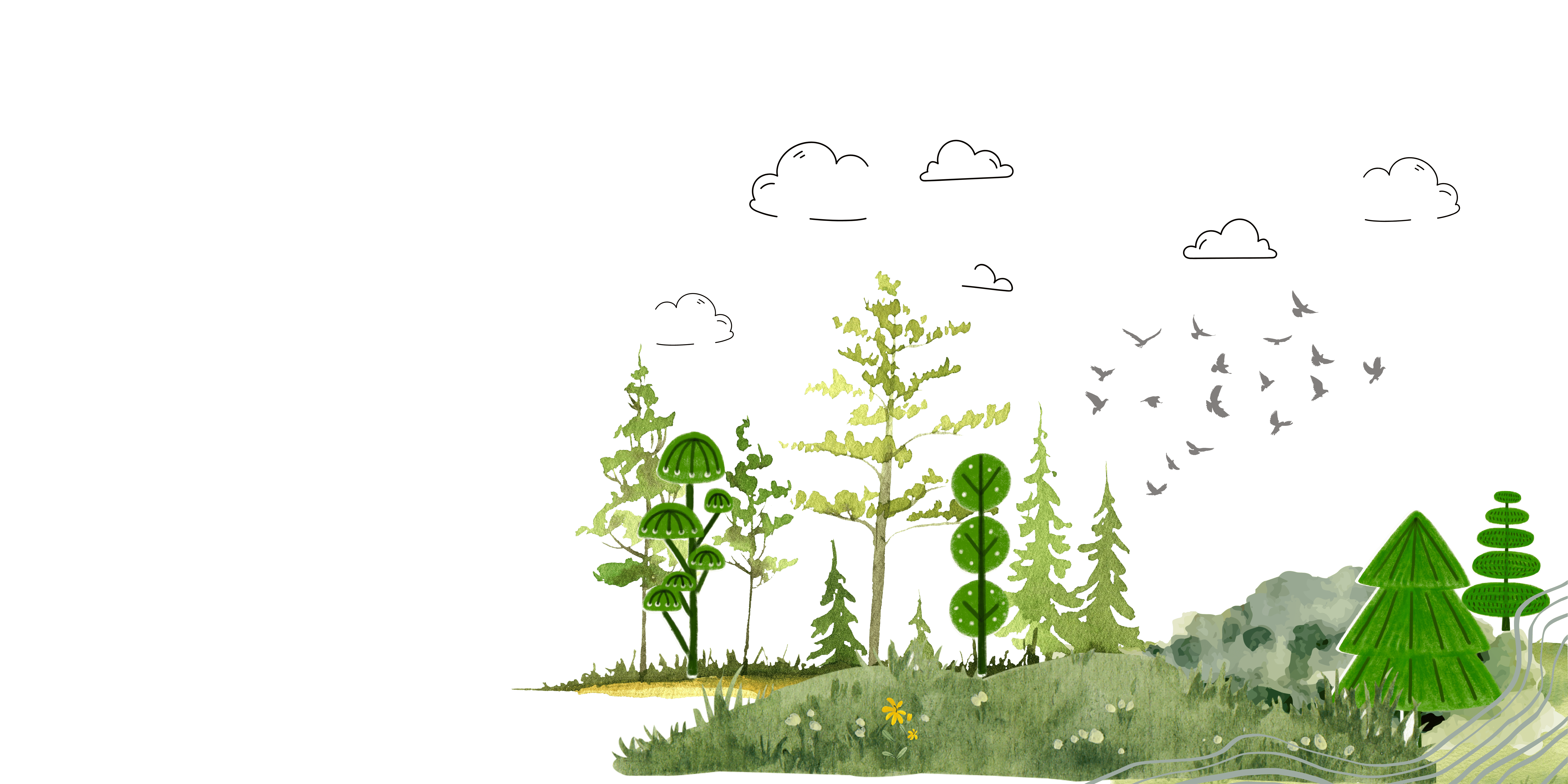
More Content Coming Soon
At Brainy and Nimble, we are dedicated to providing comprehensive educational resources. Additional grade levels and enriching content are in the pipeline. Stay tuned for our upcoming additions as we continue to expand our offerings and support learners at every stage of their educational journey.
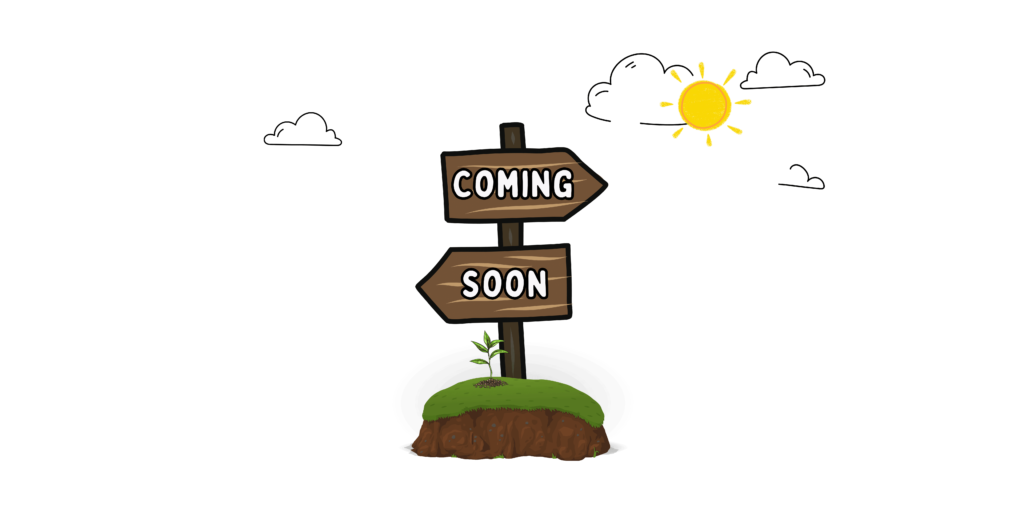
Please note that this website contains affiliate links, through which I earn a small commission from any purchases made. While it is not mandatory to use these links, your support is always greatly appreciated as these funds help support the maintenance and development of this website.
This commission comes at no additional cost to you.
